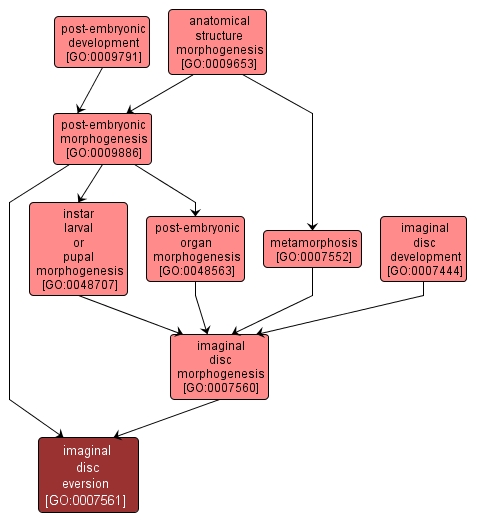GO TERM SUMMARY
|
| Name: |
imaginal disc eversion |
| Acc: |
GO:0007561 |
| Aspect: |
Biological Process |
| Desc: |
The eversion (turning inside out) of imaginal discs from their peripodial sacs, resulting in movement of the epithelium to the outside of the larval epidermis. |
|

|
INTERACTIVE GO GRAPH
|














